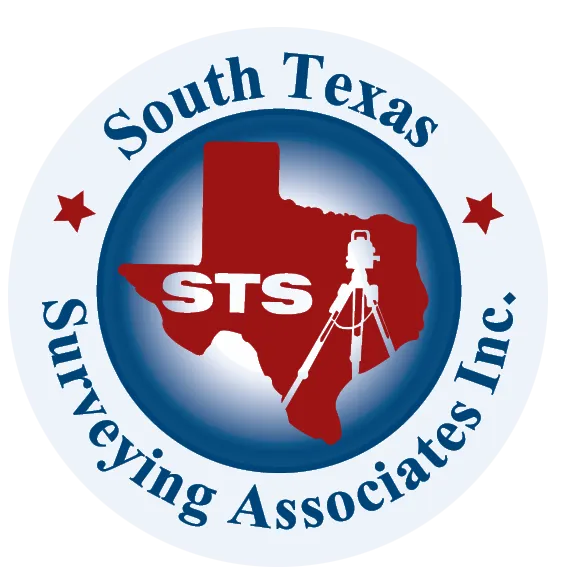Surveying Texas Since 1980 Family Owned, Customer Devoted | Firm #10045400 | 281-556-6918
See Our Latest Blogs

Navigating the Challenges of Surveying Near Houston's Key Transportation Hubs
"Texas, often referred to as the Lone Star State, is a thriving hub for economic growth and innovation, making it an attractive destination for commercial real estate investment." - Chris Evans
Surveying Commercial Properties Near Houston’s Transportation Hubs: Key Challenges and Solutions
Houston’s commercial real estate market is bustling, and properties near major transportation hubs—like airports, rail yards, and shipping ports—are in high demand due to their strategic locations. However, surveying properties in these areas comes with unique challenges and considerations. For investors and developers, understanding the complexities of surveying near transportation hubs is essential for ensuring accurate property boundaries, compliance with local regulations, and successful project planning.
In this article, we’ll explore the specific challenges of surveying commercial properties near Houston’s transportation hubs and how professional surveyors address these to deliver precise, reliable results.
Why Location Near Transportation Hubs Matters for Commercial Properties
Proximity to transportation hubs like George Bush Intercontinental Airport, the Port of Houston, and major railway lines provides commercial properties with logistical advantages. These locations are ideal for warehouses, distribution centers, and manufacturing facilities that rely on efficient access to transportation networks. However, the complexities of surveying near these high-traffic areas make it essential for developers to work with skilled surveyors who understand the unique demands of such locations.
Unique Challenges in Surveying Properties Near Houston’s Transportation Hubs
Surveying properties close to busy transportation hubs presents various obstacles that can complicate the process. These challenges require a deep understanding of local regulations, precise technology, and special permissions from regulatory authorities.
One of the primary challenges of surveying near transportation hubs is restricted access. Airports, railways, and ports often have security protocols that limit access to surrounding areas. Surveyors working near these sites must coordinate with security personnel and obtain special permissions to conduct their work. This coordination can be time-consuming, but it’s essential to ensure compliance with safety and security standards set by local and federal agencies.
Transportation hubs have extensive infrastructure networks, including underground utilities, electrical lines, and pipelines. Surveyors must identify and map these utilities accurately to avoid disruptions and potential hazards. Advanced equipment, such as ground-penetrating radar (GPR), is often required to detect underground utilities, while careful planning helps ensure these critical infrastructure elements are accounted for during the survey.
Properties near high-traffic areas are exposed to heavy vibrations from aircraft, trains, and other vehicles. These vibrations can interfere with traditional surveying equipment, impacting accuracy. Surveyors use specialized tools and vibration-dampening techniques to mitigate these effects, ensuring the data collected remains precise even in environments with frequent vibrations.
Transportation hubs often have complex zoning regulations that impact nearby commercial properties. For example, height restrictions around airports or environmental regulations near ports can influence how a property can be developed. Surveyors conduct zoning compliance surveys in these areas to ensure that proposed developments meet local zoning laws, protecting developers from potential violations and costly redesigns.
Surveying Techniques and Tools for High-Accuracy Results
To overcome the challenges of surveying near Houston’s transportation hubs, surveyors rely on advanced tools and methodologies designed to enhance accuracy and safety.
GPS and Total Stations: GPS technology and total stations provide high-accuracy positioning, which is essential for mapping boundaries and features in areas with restricted access.
Ground-Penetrating Radar (GPR): GPR allows surveyors to identify underground utilities and infrastructure, essential for properties near ports and railways.
3D Laser Scanning: Laser scanning captures detailed images of large areas quickly, making it ideal for properties with complex infrastructure or high levels of activity.
Drone Surveys: Drones provide aerial views of properties, helping surveyors capture data from difficult-to-reach areas without disturbing nearby transportation activities.
How Professional Surveyors Ensure Compliance and Accuracy
Surveying near transportation hubs involves compliance with various local, state, and federal regulations. Surveyors working in these areas must be familiar with the specific requirements of entities such as the Federal Aviation Administration (FAA) for airport-adjacent properties or the U.S. Department of Transportation (DOT) for properties near railroads. This regulatory expertise ensures that all surveying activities meet legal standards, protecting developers from potential compliance issues.
To minimize delays, surveyors coordinate with local authorities, transportation hub security teams, and utility providers before beginning the survey. This coordination streamlines the surveying process, allowing for efficient access and accurate data collection without disrupting nearby operations. Collaboration with these entities also helps surveyors understand any specific restrictions or guidelines for working near transportation infrastructure.
Surveyors also work closely with developers to integrate survey data into the planning process. By providing detailed maps and analysis, surveyors help developers understand any physical or regulatory constraints of the property, allowing them to make informed design and investment decisions that comply with local regulations.
Benefits of Surveying Near Transportation Hubs for Developers
Informed Development Decisions: Surveys provide critical data that help developers design projects that maximize location advantages while complying with regulations.
Risk Reduction: Surveying identifies underground utilities and other infrastructure, reducing the risk of project delays and potential hazards.
Enhanced Property Value: Proximity to transportation hubs is an asset; accurate surveying ensures developers can leverage this without unexpected legal or physical setbacks.
Smooth Permitting Process: Compliance with zoning and regulatory standards supports a smoother permitting process, enabling projects to proceed without costly delays.
Frequently Asked Questions (FAQs)
Why are surveys near transportation hubs more complex?
Surveys near transportation hubs are more complex due to restricted access, high-traffic environments, extensive underground utilities, and strict regulatory requirements. Surveyors must use specialized tools and coordinate with various entities to ensure accuracy and compliance.
What tools are commonly used for surveying near transportation hubs?
Tools like GPS, total stations, ground-penetrating radar (GPR), 3D laser scanners, and drones are commonly used. These tools help surveyors gather precise data, even in restricted or high-vibration areas.
How do zoning restrictions impact properties near transportation hubs?
Properties near transportation hubs often face unique zoning restrictions, such as height limitations around airports or environmental regulations near ports. Surveys help developers ensure compliance with these restrictions before construction begins.
Is a zoning compliance survey necessary for properties near transportation hubs?
Yes, zoning compliance surveys are essential for properties near transportation hubs, as they ensure that developments meet local laws and avoid issues related to zoning violations or project delays.
Can surveying detect underground utilities near transportation infrastructure?
Yes, tools like ground-penetrating radar (GPR) are used to detect underground utilities, which are common near transportation hubs. Mapping these utilities is critical to avoid damaging infrastructure during construction.
What role do surveys play in the permitting process?
Surveys provide data that supports compliance with zoning and regulatory standards, making it easier to obtain permits for projects near transportation hubs.
Navigating the Complexities of Surveying Near Houston’s Transportation Hubs
Surveying commercial properties near Houston’s transportation hubs requires a blend of advanced technology, regulatory knowledge, and careful planning. For developers, these surveys are essential for ensuring project compliance, minimizing risks, and maximizing the advantages of proximity to Houston’s major transportation infrastructure. With professional surveying services, developers can confidently navigate the unique challenges of these high-value locations, laying a solid foundation for successful, compliant, and strategically positioned commercial projects.
Delivering Land Surveys with Attention to Detail
George Owens
Commercial Broker

I have worked with many surveying companies, but South Texas Surveying stands out for their exceptional professionalism, attention to detail, and commitment to their clients.
Kim Wexler
Project Manager

Their accurate and thorough surveys make my job a lot easier, their ability to communicate effectively with all parties involved is commendable. I highly recommend South Texas Surveying.
James Cart
Homeowner

As a new homeowner, I was thoroughly impressed with the professional service provided by South Texas Surveying. I high recommend their services to any one buying a home in Houston.
Contact Us
Email: [email protected]
Office Address: 11281 Richmond Ave
BLDG J, Suite 101,
Houston, TX 77082
Office Hours: Mon – Fri 8:00am – 5:00pm
Office Phone Number: 281-556-6918
11281 Richmond Ave
BLDG J, Suite 101,
Houston, TX 77082
Firm Number: 10045400
Resources
© Copyright 2024 South Texas Surveying Associates
